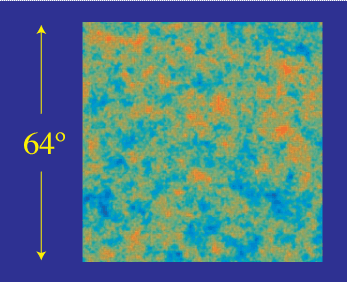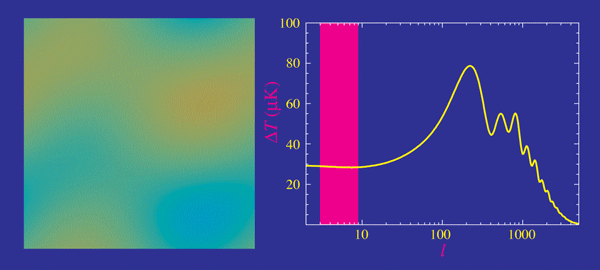
The cosmic microwave background (CMB) temperature and polarization power spectra have proven to be a gold mine of information about the physical composition of the universe. Given say, a temperature map:

The temperature power spectrum separates the intensity of hot and cold spots in the temperature map of different angular scales:

The magenta band on the right represents a filter on the angular size of features in the map on the left. The filter starts on the 10 degree scale similar to the original COBE measurements. As the filter passes through the first peak in the power spectrum, the spots are degrees in scale and most intense. As the filter goes to the right edge, the spots are arcminute scale and are barely visible due to diffusion damping. [From Hu and White 2004]
In the following pages, explore the dependence of the temperature power spectrum on the ordinary matter density (or baryons), total matter density (including dark mattter), spatial curvature, reionization optical depth.
The CMB polarization has the additional ability to distinguish between density perturbation (scalars), vortical perturbations (vectors) and gravitational wave perturbations (tensors) coming out of the early universe.